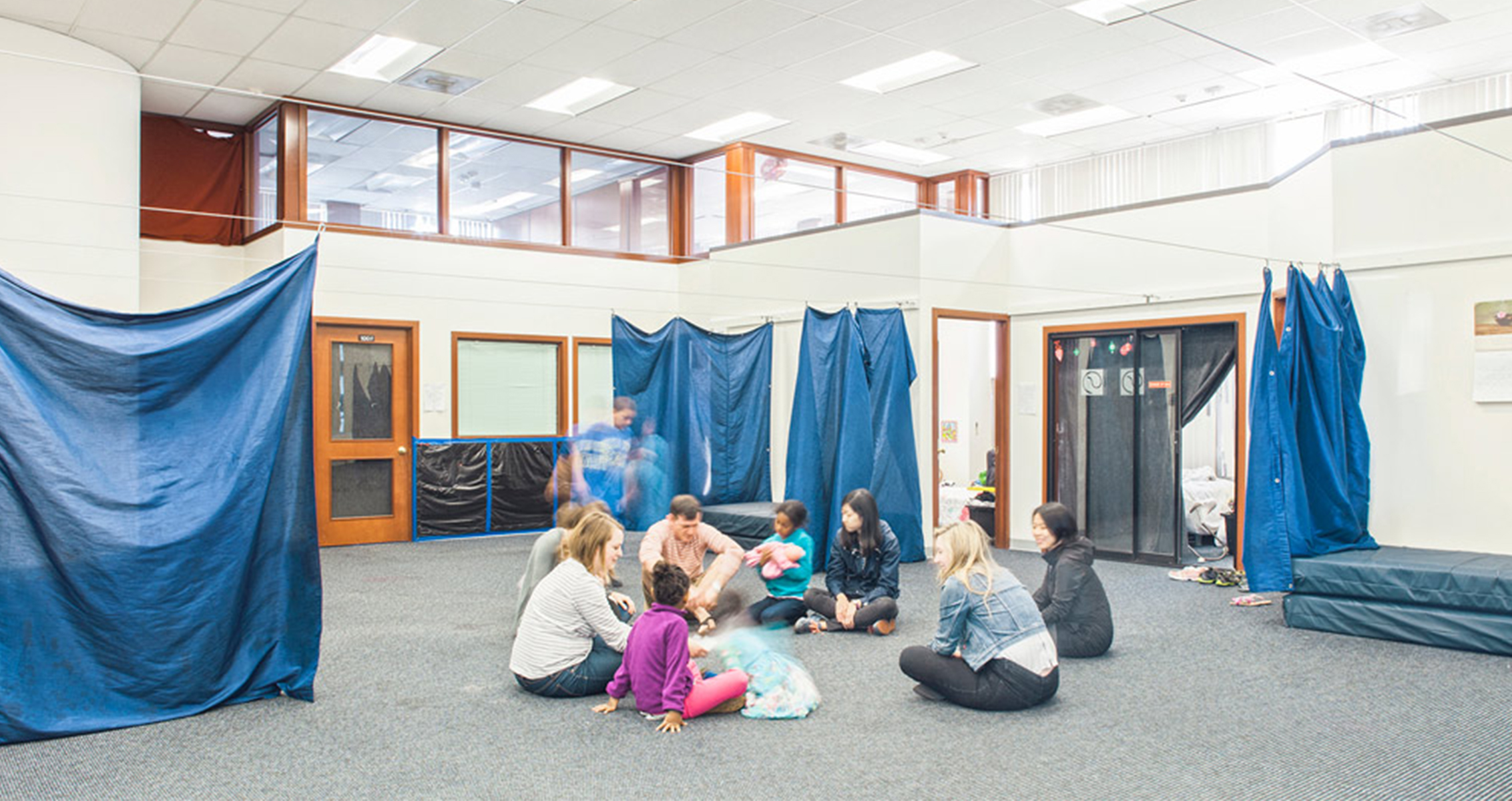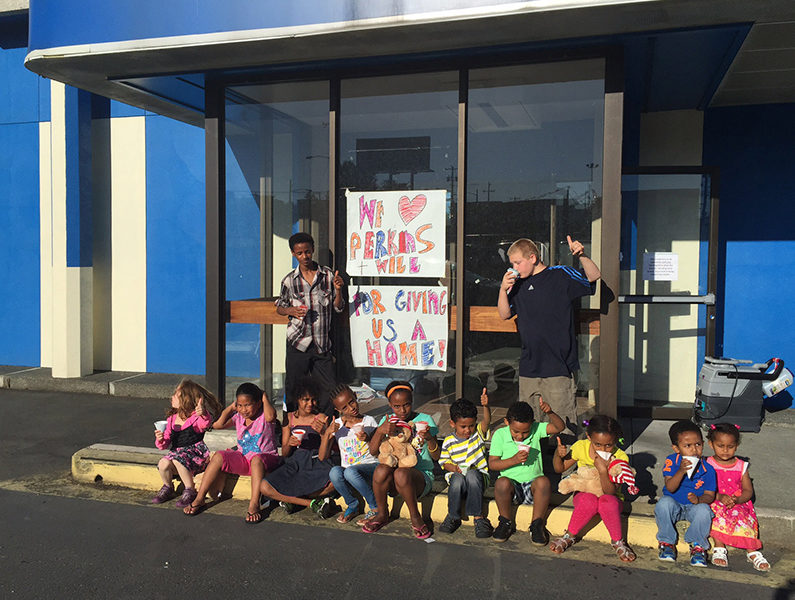How much space does your bed take up? If it is a twin bed, then it is just over 19.5 square feet, smaller than the average 5’x5′ work cubicle.
Have you ever considered a space by how many beds could fit into it? What about that old vacant office building that you pass by on your commute? In Seattle, we have been working for the past five years with a local non-profit, Mary’s Place, to turn these vacant buildings into emergency shelter, into a “home for now” for families experiencing homelessness. Mary’s Place meets the critical need of emergency housing and support services for women and families in the Seattle area. Their facilities are places of community, of learning and laughter, of growth and care. Typically though, their facilities are also temporary and are an adapted commercial or office building that has been converted into a shelter.
Over the years, we have been a part of the larger team to help make these temporary “homes for now” a reality. We’ve gotten familiar with bed counts, sleeping efficiencies, and test fits for making the most out of buildings originally not intended for residential use. These are a few things that have stuck with us along the way.
It takes a community.
In the AEC network, from a property owner willing to let Mary’s Place move in, to the permitting agencies that enable a quick turnaround, and the contractors that work at reduced costs and procure donations, it takes us all working together to help make these homes a reality. Mary’s Place operates across several jurisdictions in the Puget Sound Region, and we have been fortunate to work with officials who recognize the need and understand the urgency of bringing every child and family inside at night. Homeless shelters occupy an in-between area of most building and zoning codes. To address this, the City of Seattle has developed a director’s rule that specifically addresses code issues that has been instrumental in opening these temporary facilities.
Spaces matter, but a little goes a long way.
A typical building flip requires modification to add showers, laundry, reheat kitchen, added electrical for refrigerators and freezers. Carpet is replaced with resilient flooring. Ramps, grab bars, and door handle levers help make spaces accessible. Check-in areas with high visibility and operable shades help navigate security issues. Curtains go up in windows; bright paints add color to the walls, tack boards in community areas are quickly filled with notices that celebrate new homes, new jobs, birthdays, and graduations.
The first location we helped with had a great open office space that worked perfectly as a dining area, but that was not ideal for sleeping. To help meet this need a sliding curtain system was developed to provide visual privacy during sleeping hours. A simple overhead cable system, with dark blue curtains and carabineer clips, transforms larger rooms in an easy to use manner. By standardizing the curtain systems from the first location onward, the curtain panels are reused from shelter to shelter.
That vacant building has a better use.
Vacant buildings have increased rates of arson, vandalism, and adjacent lots have reduced property values. That vacant building could be occupied as a temporary homeless shelter. For example, a facility with 20 beds operating for a 12 month period would be able to provide 7,300 bed nights. In this win-win scenario, emergency housing is provided and the property owner benefits from having an occupied building where the users of the space treat the facility like their own home. The effort invested in modifying the space is worth the cost to help make sure that no child sleeps outside in our community. Mary’s Place has turned a varied stock of vacant restaurants, office buildings, banks, sheriff departments, and motels into “homes for now” with leases that range from 3-4 months to 2 years. Balancing the investment and the timeline to begin operation in a space, 12 month or longer leases are preferred and enable higher quality improvements and a higher rate of donated materials can be incorporated to help transform the space for emergency shelter use. Using this vacant building model, in 2017 alone, the team identified, programmed and opened four new facilities to help meet the need.
This is not just a Seattle, or West-Coast, problem.
Almost every city in the US is dealing with the impacts of aging housing stock, increased cost of living, and larger homeless populations. In January 2017, it was estimated that over half a million people in America are living in homelessness. As many communities are scrambling to increasing emergency housing capacity before the next fall and winter season, consider those vacant buildings and what higher purpose it could, even temporarily serve. By sharing what is working in our communities, we will be able to reach more innovative solutions to meet critical needs.
Mary’s Place recently announced the purchase of their first permanent home that will be occupied mid-summer 2018. The process for site selection, bed layouts and programming was much the same as with the temporary shelter locations. This time though, we know that their impact will be much greater, for much longer, and we are one step closer to making sure that no child sleeps outside.

